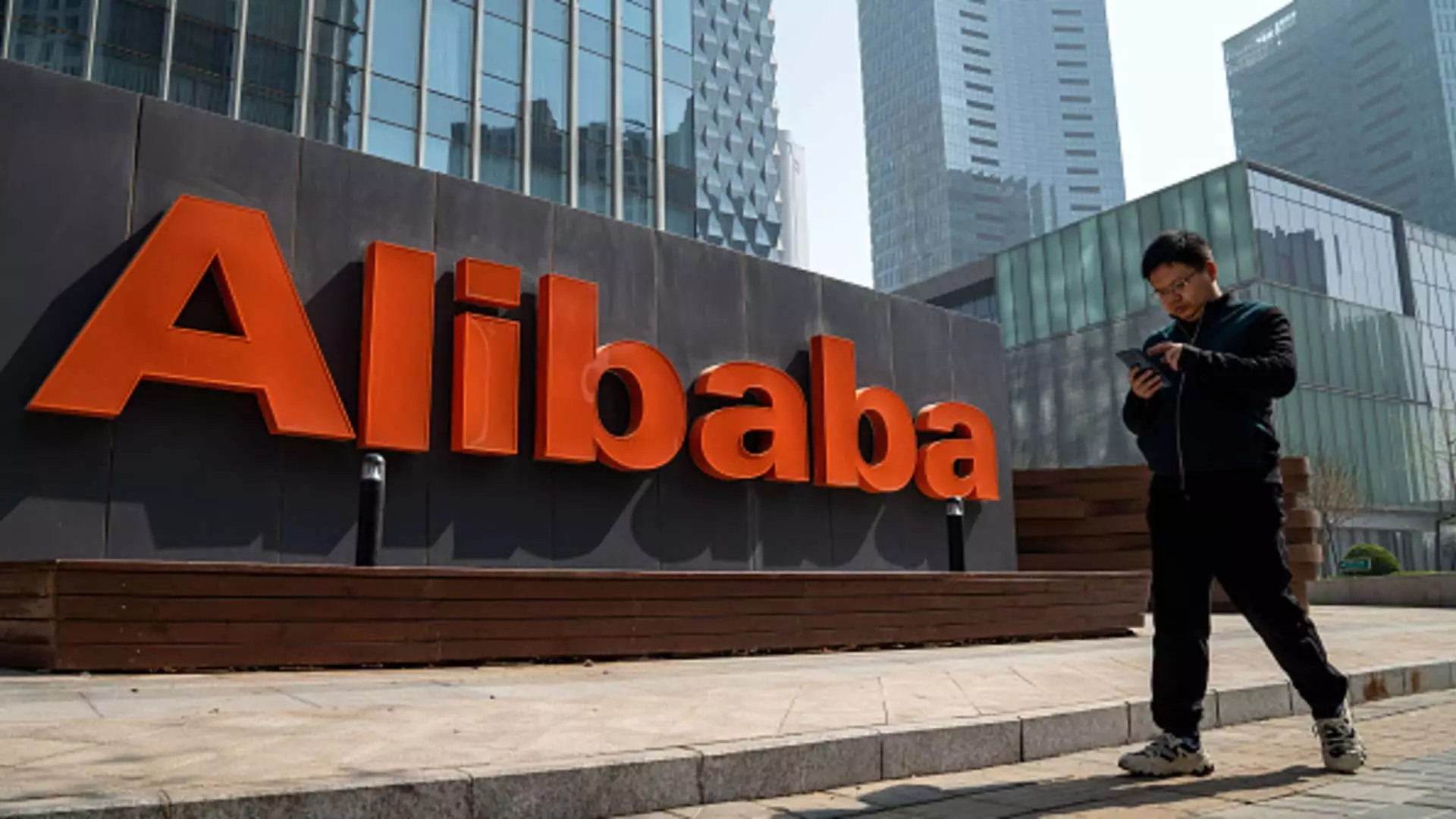Alibaba, the iconic Chinese e-commerce giant, released its financial results for the September quarter, revealing a significant increase in net income alongside disappointing sales figures. The company’s net income soared by 58% to reach 43.9 billion Chinese yuan (approximately $6.07 billion), largely due to favorable shifts in its equity investments. This remarkable performance outstripped analysts’ expectations, which had forecasted a more modest profit of 25.83 billion yuan. Nevertheless, the revenue figures painted a different story: Alibaba posted revenues of 236.5 billion yuan, marking only a 5% increase compared to the previous year. This growth fell short of predictions, as analysts had anticipated a revenue intake of 238.9 billion yuan.
The stark contrast between skyrocketing profits and lackluster sales serves as a microcosm for Alibaba’s current predicament. Although the company has improved its bottom line significantly, the overall sales trends indicate the mounting pressure on consumer spending in China, the world’s second-largest economy. Sluggish economic conditions and waning consumer confidence have undoubtedly hampered growth, presenting a troubling landscape for Alibaba and its peers in the e-commerce sector.
Consumer behavior in China has become increasingly cautious, a trend underscored by Alibaba’s latest figures. The company reported only a slight revenue increase from its main business units, Taobao and Tmall Group, which grew by a nominal 1% to reach 98.99 billion yuan for the quarter. Compounded by disappointing sales figures from other major players like JD.com, this situation raises critical questions about the sustainability of retail performance in the current economic climate.
In the face of these challenges, Alibaba’s recovery relies heavily on government intervention. Recent stimulus measures, including the announcement of a 1.4-trillion-yuan economic package, are aimed at revitalizing consumer activity and fostering growth. Early indicators suggest a potential rebound; retail sales saw a better-than-expected increase of 4.8% year-on-year in October. Moreover, the annual Singles’ Day shopping event, which is traditionally a strong indicator of consumer sentiment, experienced renewed enthusiasm among shoppers, providing glimmers of hope for Alibaba’s performance.
In addition to domestic sales, Alibaba’s international endeavors are evolving. The company’s online shopping platforms, such as Lazada and AliExpress, demonstrated impressive growth, posting a remarkable 29% rise in sales to 31.67 billion yuan year-on-year. This increase indicates that while domestic consumption may be stalling, Alibaba’s ability to capture international markets remains strong.
Alibaba’s Cloud Intelligence Group also showcased resilience with a 7% annual growth in sales, amounting to 27.65 billion yuan. The slight acceleration—up from 6% growth in the previous quarter—underscores the firm’s strategic pivot toward cloud-based services and artificial intelligence (AI). As CEO Eddie Wu emphasized, the cloud division is envisioned as a critical growth driver for the company, especially with the multi-faceted opportunities presented by AI technologies. Notably, Alibaba is making strides against its competitors, including Baidu and Huawei, while also keeping pace with Western giants like Microsoft and OpenAI.
As Alibaba charts its course amid changing economic tides, the path forward remains contingent upon factors beyond its control. Analysts express cautious optimism while scrutinizing the impact of recent regulatory changes and government support on the company’s long-term prospects. With the dynamic and often unpredictable nature of the Chinese market, many view Alibaba’s operations as closely tied to broader economic conditions.
The e-commerce titan’s ambitious embrace of AI—evidenced by the launch of its ChatGPT-style product, Tongyi Qianwen, and a new AI-driven search tool—demonstrates its commitment to adaptability. Such innovations may prove pivotal in enhancing consumer engagement and market relevance in a rapidly evolving tech landscape. However, maintaining a delicate balance between navigating ongoing regulatory challenges and capitalizing on emerging opportunities will be crucial for Alibaba’s ongoing success.
While Alibaba’s financial results highlight profitable ventures, significant challenges in sales growth signal a more complex reality within the Chinese e-commerce arena. The forthcoming months will reveal if stimulus measures and renewed consumer interest can adequately support one of the industry’s giants as it navigates a transformation amidst economic uncertainty.


Leave a Reply